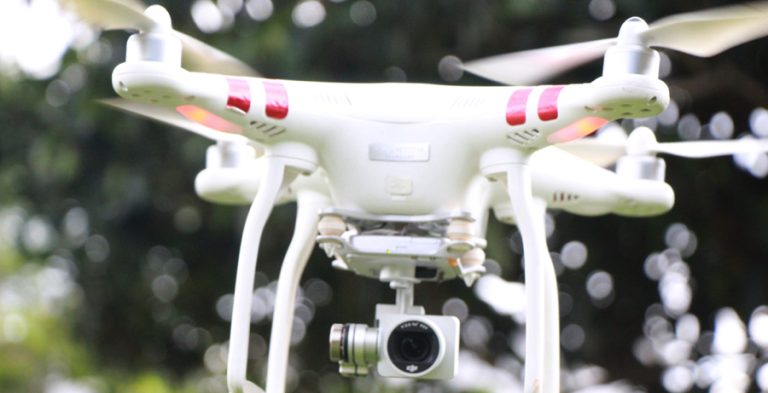Exclusive Report: The U.S. Army's Expanding Drone Fleet And Capabilities

Table of Contents
The Diverse Range of U.S. Army Drones
The U.S. Army utilizes a diverse range of unmanned aerial vehicles (UAVs), or military drones, categorized by size and mission. From small, hand-launched reconnaissance drones to large, long-endurance armed UAVs, the Army's drone fleet offers unparalleled versatility and adaptability across various operational environments. This variety allows for tailored responses to diverse threats and mission requirements.
-
MQ-1C Gray Eagle: This medium-altitude, long-endurance (MALE) UAV is a crucial component of the Army's drone fleet. Its long flight time and significant payload capacity allow for extended surveillance, reconnaissance, and even targeted strikes. The Gray Eagle's integration of advanced sensors and weaponry makes it a potent asset in modern conflict.
-
RQ-7 Shadow: The RQ-7 Shadow is a tactical, unmanned aerial system (UAS) primarily used for reconnaissance and surveillance at the brigade and battalion levels. Its relatively small size and ease of deployment make it ideal for rapidly changing battlefield conditions.
-
RQ-20 Puma AE: This small, hand-launched UAV provides critical reconnaissance capabilities in close-quarters combat situations. Its portability and rapid deployment make it invaluable for situations where larger drones may be impractical.
-
Small, Commercially-Available UAS Integration: The Army is increasingly integrating smaller, commercially available drones into its operations. These platforms, often equipped with advanced sensors, offer cost-effective solutions for various tasks, such as mapping terrain, assessing damage, and providing real-time situational awareness.
-
UAS Size Comparison: The Army utilizes a spectrum of unmanned aerial systems, spanning small UAS (like the Puma), medium UAS (such as the Shadow), and large UAS (including the Gray Eagle). The selection of the appropriate drone depends on the mission's specific needs and the operational environment.
Advanced Technologies Enhancing Drone Capabilities
The effectiveness of the Army's drone fleet is driven by continuous technological advancements. These innovations significantly enhance the capabilities of U.S. Army drones, increasing their precision, range, and overall impact on military operations.
-
Artificial Intelligence (AI) Integration: AI is revolutionizing drone technology, enabling autonomous flight, improved target recognition, and enhanced decision-making capabilities. AI algorithms allow drones to navigate complex terrain, identify potential threats, and even execute pre-programmed missions with minimal human intervention.
-
Advanced Sensor Technology: Modern Army drones are equipped with a range of high-tech sensors, including high-resolution electro-optical cameras, thermal imaging systems, and advanced radar. These sensors provide unparalleled situational awareness, enabling real-time intelligence gathering and precise targeting.
-
Enhanced Data Analytics: The vast amount of data collected by drones requires sophisticated analytical capabilities. Real-time data processing and analysis allow commanders to make informed decisions, improve situational awareness, and optimize operational effectiveness. This includes intelligence, surveillance, and reconnaissance (ISR) capabilities that are critical for modern warfare.
-
Future Technologies: The Army is actively researching and developing future drone technologies, including swarm drone technology that allows coordinated operation of multiple drones and hypersonic drones capable of achieving extreme speeds and ranges.
Strategic Implications of the Expanding Drone Fleet
The expanding use of drones by the U.S. Army has profound strategic implications, transforming battlefield tactics, enhancing cost-effectiveness, and raising significant ethical considerations.
-
Impact on Battlefield Tactics: Drones have fundamentally altered battlefield tactics. Their ability to provide real-time intelligence, conduct surveillance, and even engage targets remotely offers significant advantages in modern warfare. This allows for more precise and effective operations, minimizing risk to ground troops.
-
Cost-Effectiveness: Compared to traditional manned aircraft, drones offer a significantly more cost-effective solution for many military operations. The lower operational costs associated with drones allow for increased mission frequency and broader utilization.
-
Ethical Considerations: The use of armed drones raises significant ethical considerations, particularly regarding civilian casualties and accountability. The Army is actively working to address these ethical challenges through strict protocols and operational guidelines.
-
Asymmetric Warfare and Counterinsurgency: Drones play a crucial role in asymmetric warfare and counterinsurgency operations. Their ability to conduct surveillance in remote and challenging environments provides valuable intelligence and allows for precise targeting of enemy combatants.
-
The Future of Warfare: The continued development and deployment of drone technology will undoubtedly reshape the future of warfare. The potential for autonomous weapons systems and the integration of AI raises both opportunities and concerns regarding the future of global military strategy.
Conclusion
This report highlighted the significant expansion of the U.S. Army's drone fleet, showcasing the diverse range of UAVs, their advanced technological capabilities, and the far-reaching strategic implications. The integration of AI, improved sensors, and advanced data analytics is revolutionizing aerial surveillance and warfare. The capabilities of U.S. Army drones are constantly evolving, impacting military strategy and the future of conflict.
Call to Action: Stay informed about the evolving landscape of U.S. Army drones and their impact on global defense strategies. Continue exploring resources on military drone technology and the future of unmanned aerial vehicles. Learn more about the latest advancements in U.S. Army drone capabilities by subscribing to our newsletter or following us on social media.

Featured Posts
-
 Jeffrey Dean Morgan Bringing Negan To Life In Fortnite
May 03, 2025
Jeffrey Dean Morgan Bringing Negan To Life In Fortnite
May 03, 2025 -
 Manchester Uniteds Transfer Decision Faces Sounesss Wrath
May 03, 2025
Manchester Uniteds Transfer Decision Faces Sounesss Wrath
May 03, 2025 -
 Ps Plus February 2024 Underrated Gem Joins The Lineup
May 03, 2025
Ps Plus February 2024 Underrated Gem Joins The Lineup
May 03, 2025 -
 Fortnite Adds Another Icon Details On The New Skin
May 03, 2025
Fortnite Adds Another Icon Details On The New Skin
May 03, 2025 -
 Boris Johnsons Comeback A Lifeline For The Conservative Party
May 03, 2025
Boris Johnsons Comeback A Lifeline For The Conservative Party
May 03, 2025
